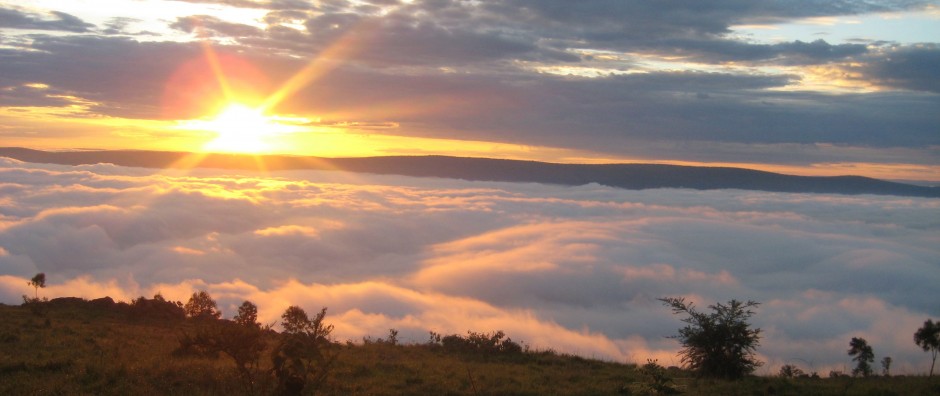While I made a short visit to Rwanda last semester, it was so short that we didn’t have the time to do anything “cultural.” My latest visit was a little longer, and as a result I had the time to visit the official genocide memorial in Kigali. There are a number of memorials situated across the country, comparable perhaps to the way in which concentration camps have been memorialized across Germany. In Rwanda, these sites include large burial grounds, places of resistance, and places where mass killings took place. However, there is still a central memorial site which is situated to provide knowledge of the historical context, much like the major Holocaust museums that are situated in many places throughout the world.
The site is very interesting, especially as I thought about in contrast to my experience at the Holocaust museum in Israel. It does not have much of the majesty of that site, or of memorial sites in America, and there were areas that were not operational while we were there. This makes a lot sense when you consider that it was created on a far more limited budget, and so recently following the genocide. Despite this, some parts of the memorial are extremely powerful.
In particular, there was a circular room with over 2,000 photographs of genocide victims hanging on the wall. These photos were paired with some video of survivors speaking about the last moments they shared with loved ones. Watching these people get choked up as they remembered these moments of extreme pain was heartbreaking. The next room contained skulls and bones of unidentified victims. This was especially intense, and helped to capture the magnitude of the genocide. Most victims have never been identified, largely because of not only the scale of the atrocities, but also because so many whole families were killed. As a result, there are mass graves across the country, including some at the memorial. These mass graves are covered with giant concrete slabs that seem a little odd to my sensibilities, but, again, are very practical.
Most surprising to me was how few Rwandans I saw visiting the memorial. Most of the people visiting were white tourists. The genocide is such a recent chapter in Rwandan history that I think many Rwandans find it very painful to talk and think about. Indeed, as a result it is not considered polite to ask questions about the genocide. From what I understand, the Rwandan government has also discouraged discussion of the topic for fear of the divisive potential it represents. This is unfortunate, because being in Rwanda one cannot be help to be curious.
Many people have odd scars on their heads or other physical disfigurements that I cannot help but think are a result of the genocide. People my age were children during the genocide, but I am sure many of them have vivid and traumatic memories of the experience. And people older than I lived through it, experiencing intimately many of the things I have only read about. The language barrier would make conversing with most of these people very difficult (most Rwandans only speak Rwandese well), but it would be so fascinating to be able to ask people about what their experience was like. Instead, I must rely on the videos I have watched prior to coming here, and on the testimony that was presented at the memorial. This is not altogether a bad thing, but I can’t help but wish to hear some of this testimony firsthand.
